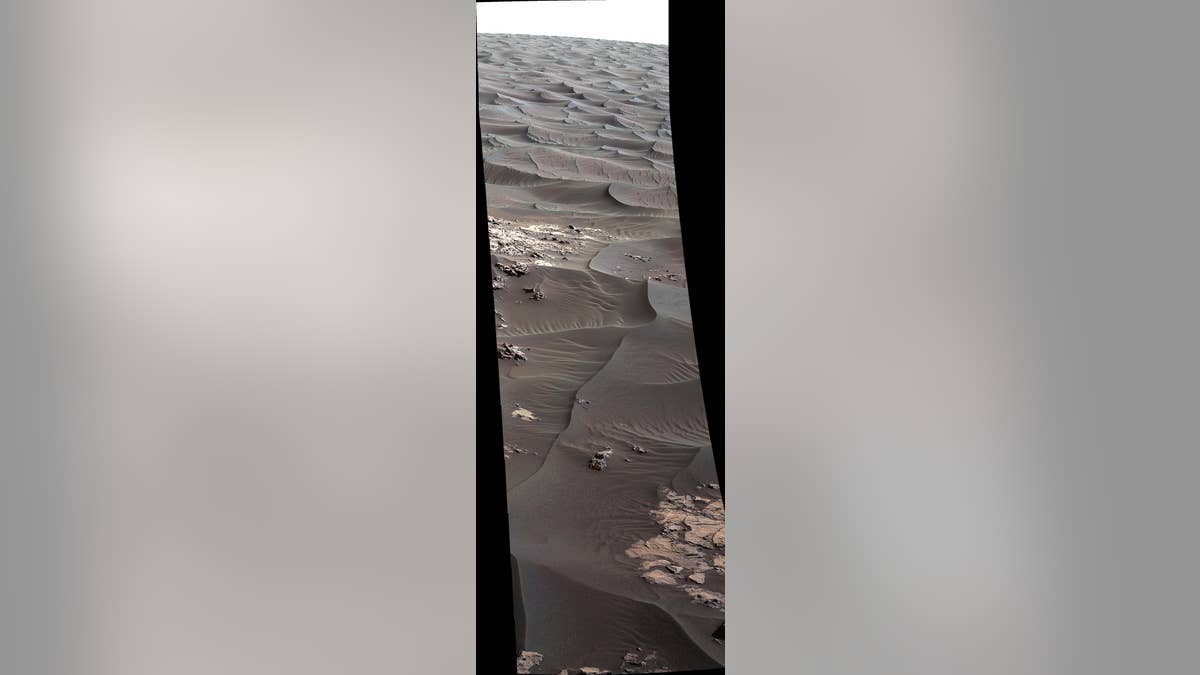
The rippled surface of the first Martian sand dune ever studied up close fills this Nov. 27, 2015, view of "High Dune" from the Mast Camera on NASA's Curiosity rover. (NASA/JPL-Caltech/MSSS)
NASA's Curiosity Mars rover has begun an up-close investigation of dark sand dunes up to two stories tall on the Red Planet.
The rover will be passing over the dunes on its trek up the lower portion of a layered Martian mountain, a trip that should take several months.
The dunes close to Curiosity's current location are part of "Bagnold Dunes," a band along the northwestern flank of Mount Sharp inside Gale Crater. The dunes are made from basaltic minerals, which give them their dark color. Observations of this dune field seen from orbit show that edges of individual dunes move as much as 3 feet per Earth year.
Related: Martian sand dune resembles a massive leech
They don’t look all that different from dunes found on Earth. But this is the first investigation of an active sand field on another planet.
NASA plans to have the rover scoop up a sample of the dune material for analysis with laboratory instruments inside Curiosity.
Related: Strange ‘figure’ spotted by Mars Curiosity Rover
Among other things, scientists hope to learn how the dunes move and whether they are different than those found on Earth – since the Mars atmosphere is less than 1 percent as thick as Earth and its gravity is only a third of Earth. They also want to find out whether sand grains of different sizes possibly include different types of minerals.
Curiosity has been working on Mars since early August 2012. It reached the base of Mount Sharp in 2014 after investigating outcrops closer to its landing site and then trekking to the mountain. The main mission objective now is to examine successively higher layers of Mount Sharp.
